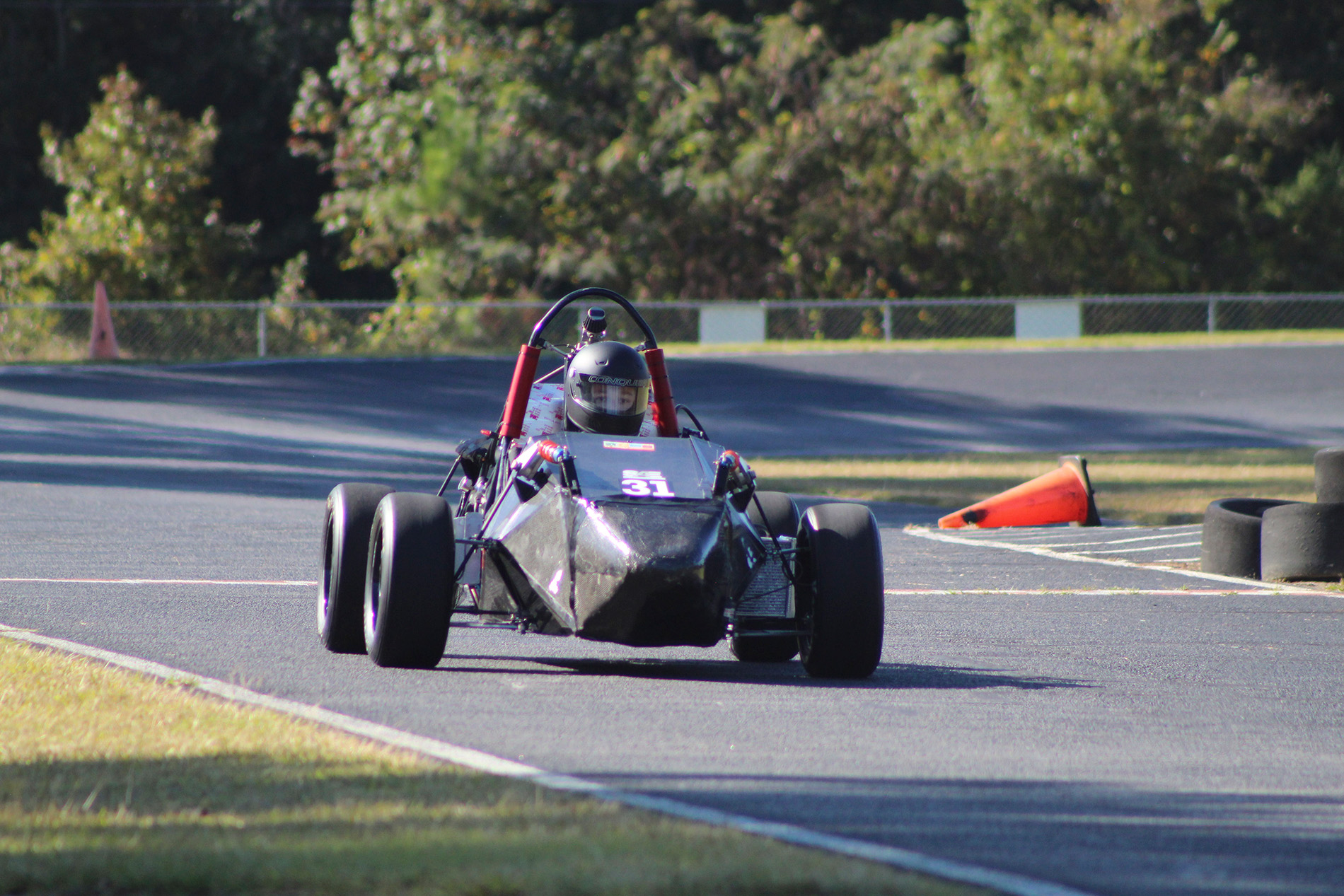It’s a Wednesday evening in September, and about 35 University of Georgia students gather in a Driftmier Engineering Center classroom.
They sit in small clusters around computers and schematics, joking and talking quietly—most likely about cars—as they wait for the meeting to begin.
Soon, fifth-year engineering student Alex Reyes steps to the podium and calls the meeting to order. He is director of the Formula Society of Automotive Engineers team at UGA Motorsports. And he is leading the team that’s building a formula car to race in the spring.
The Society of Automotive Engineers, or SAE, is a U. S.-based, globally active association for engineering professionals in various industries. The organization hosts Collegiate Design Series competitions for university students to conceive, design, fabricate, develop, and race a variety of vehicles. These UGA students are just beginning the design portion of a Formula SAE car. In May 2023, they will compete with the finished vehicle at the Michigan International Speedway, about an hour from Detroit.
Reyes is back in the U.S. after spending a year abroad in Germany studying at the Karlsruhe Institute of Technology as part of UGA’s dual degree in engineering and German, a five-year program resulting in two bachelor’s degrees. Students spend four weeks in intensive language instruction at the Goethe Institut in Bonn and then complete a semester at Karlsruhe, one of Germany’s top-ranked technical universities.
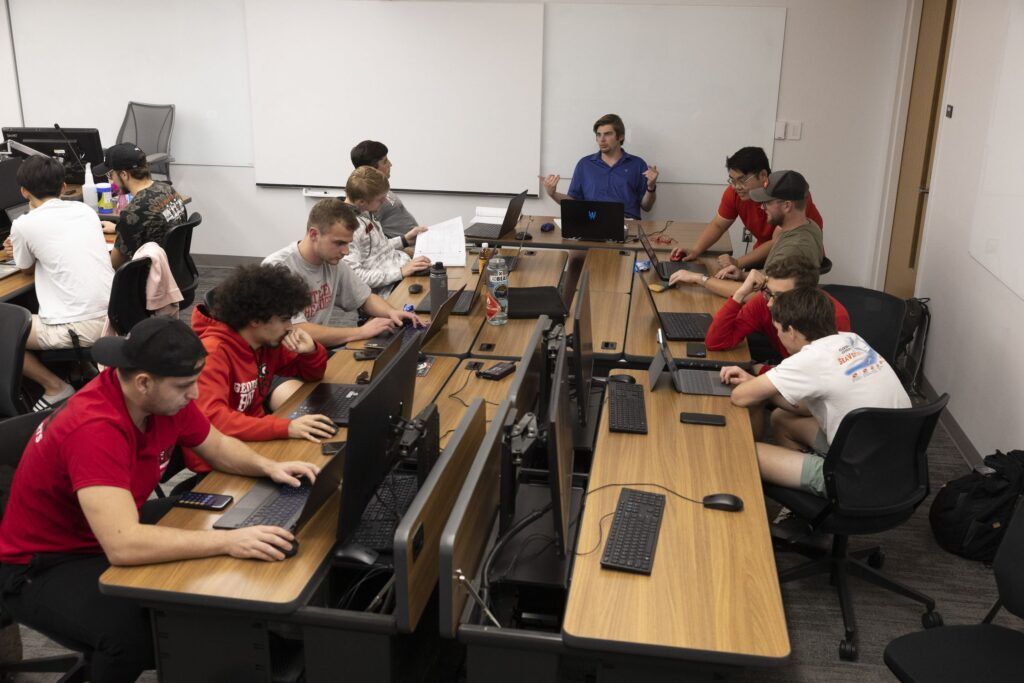
The Society of Automotive Engineers, or SAE, is a U. S.-based, globally active association for engineering professionals in various industries. The organization hosts Collegiate Design Series competitions for university students to conceive, design, fabricate, develop, and race a variety of vehicles. These UGA students are just beginning the design portion of a Formula SAE car. In May 2023, they will compete with the finished vehicle at the Michigan International Speedway, about an hour from Detroit.
Reyes is back in the U.S. after spending a year abroad in Germany studying at the Karlsruhe Institute of Technology as part of UGA’s dual degree in engineering and German, a five-year program resulting in two bachelor’s degrees. Students spend four weeks in intensive language instruction at the Goethe Institut in Bonn and then complete a semester at Karlsruhe, one of Germany’s top-ranked technical universities.
But he’s excited to be back in Athens, finishing up his degree and working on building this year’s SAE formula car for competition. One of the reasons he decided to attend UGA was the opportunity to be an integral part of the Motorsports Team, even as a new student.
“There’s a more personal approach here, and I’m able to develop a more personal relationship with the professors,” says Reyes.
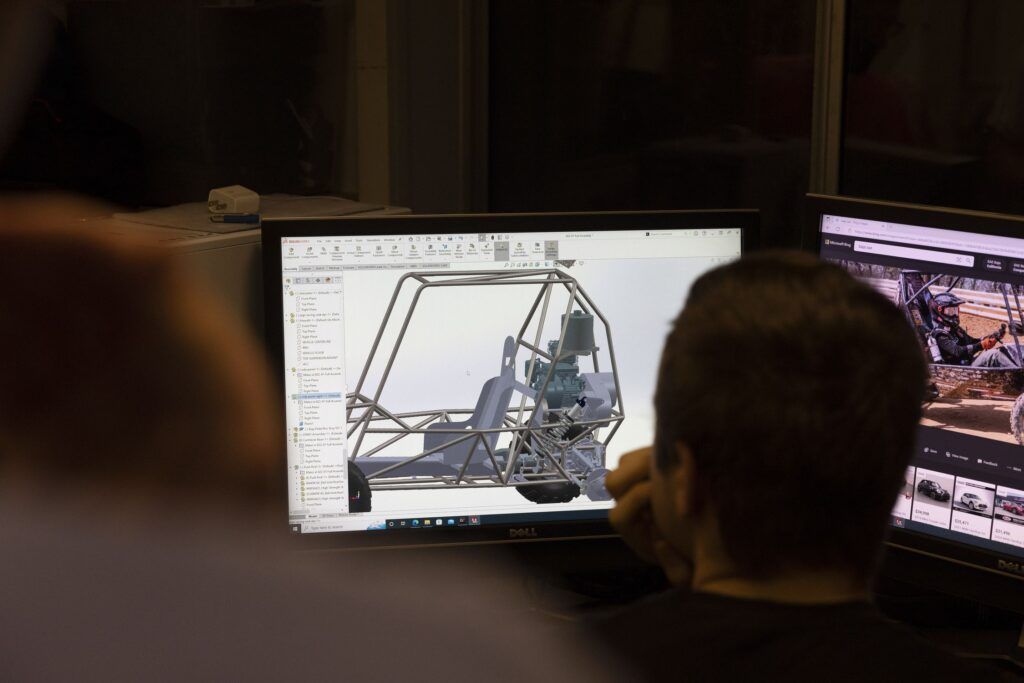
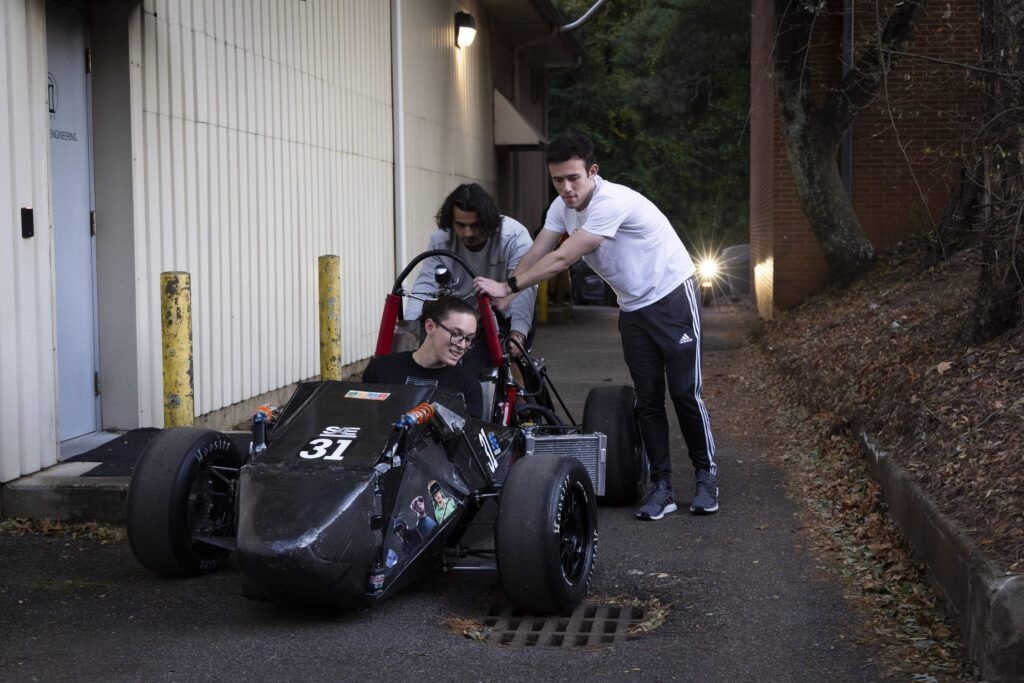
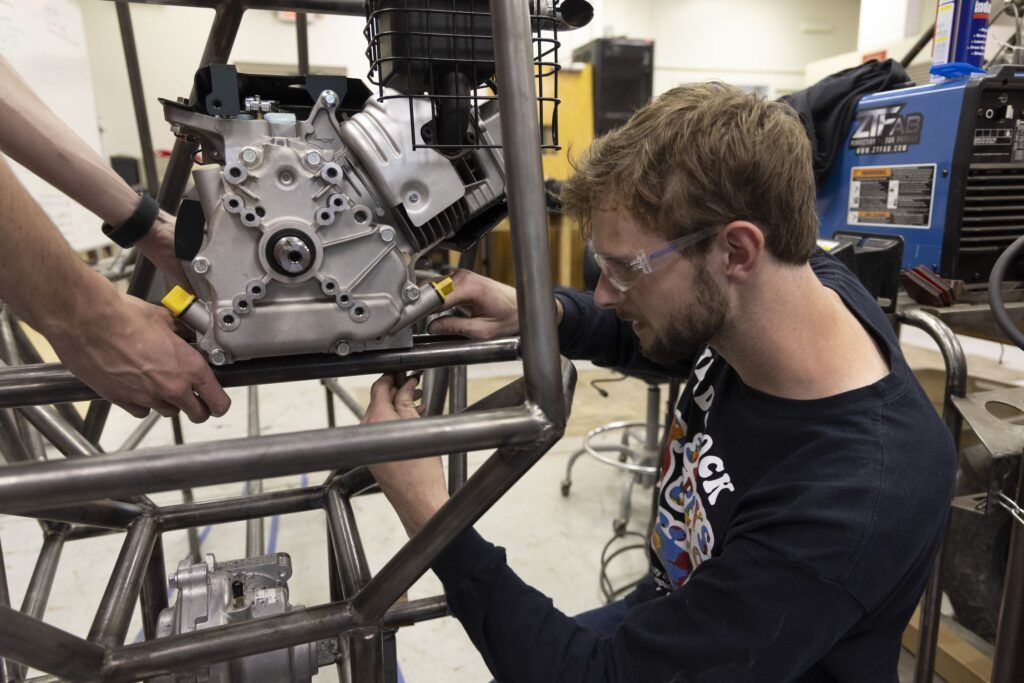
Student organization picks up speed
UGA Motorsports was founded in 2014 by a group of students who loved cars. Sam Hepburn BSME ’17, who now works for the electric vehicle manufacturer Rivian, reached out to associate professor John Mativo, and they officially formed the Society of Automotive Engineers at UGA. They spent the next four years building the student-driven club.
UGA Motorsports has two official divisions: Formula SAE and Endurance Racing. The Formula team builds a small-scale Formula One race car to compete internationally. The endurance team takes preexisting cars and turns them into vehicles that have the durability to race in the ChampCar Endurance series. In an endurance race, teams of multiple drivers cover a large distance in a single event.
The Formula SAE team got a breakthrough in 2018 when students received the necessary support from Don Leo, dean of the College of Engineering, to design and build their first Formula SAE vehicle. In one year, they built a car and competed in a race in Lincoln, Nebraska.
Two new divisions have been added to the club in recent years: a Baja SAE team and an SAE Electric Vehicle team.
Designs for a Baja SAE vehicle began in Fall 2020. Baja cars, which look similar to dune buggies, are off-road vehicles that can withstand rough terrain. During the 2021-2022 school year, Matthew Colquitt BSME ’22, who now works for Cessna, led the team to finish the initial designs and assemble parts for the Baja SAE car. The team was able to build the frame of the Baja car before Colquitt’s graduation in May.
Other students are now completing the project and they plan to race the car sometime in 2023.
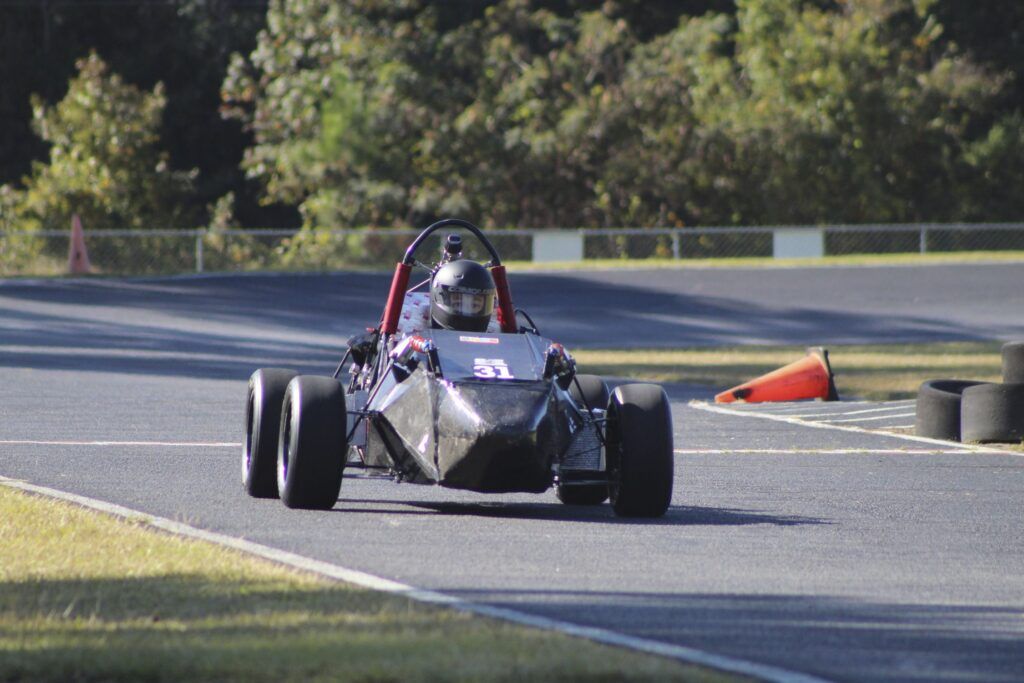
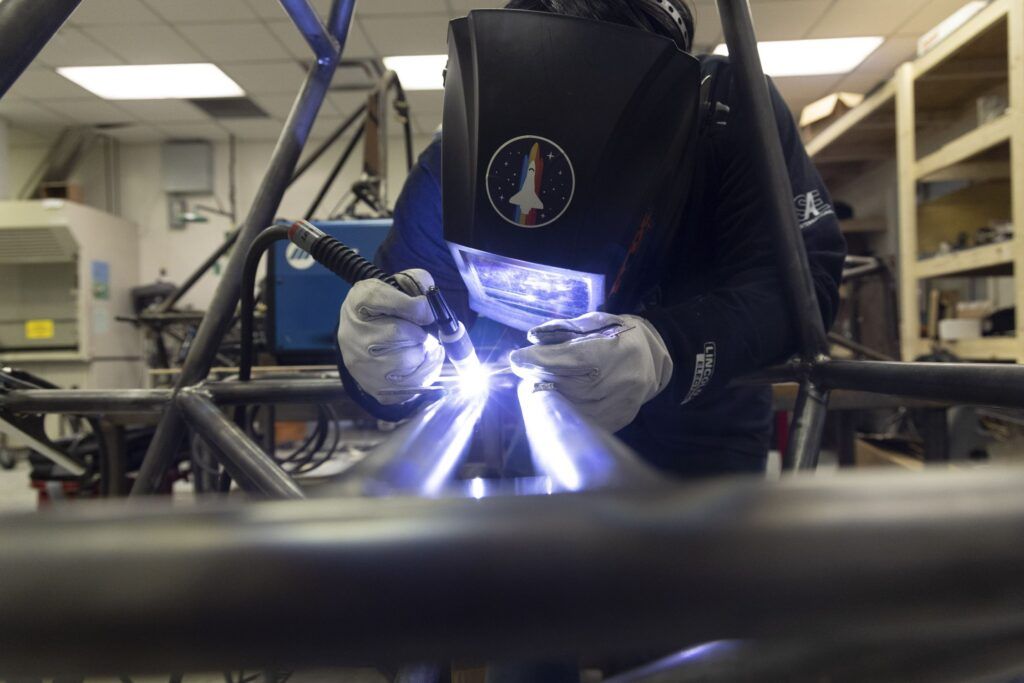
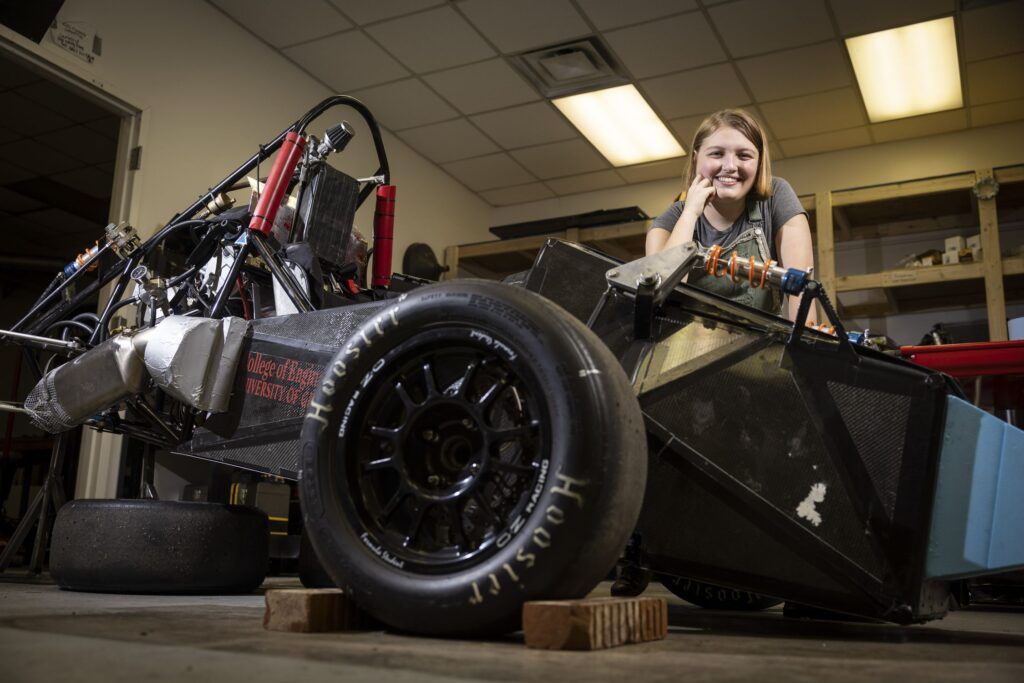
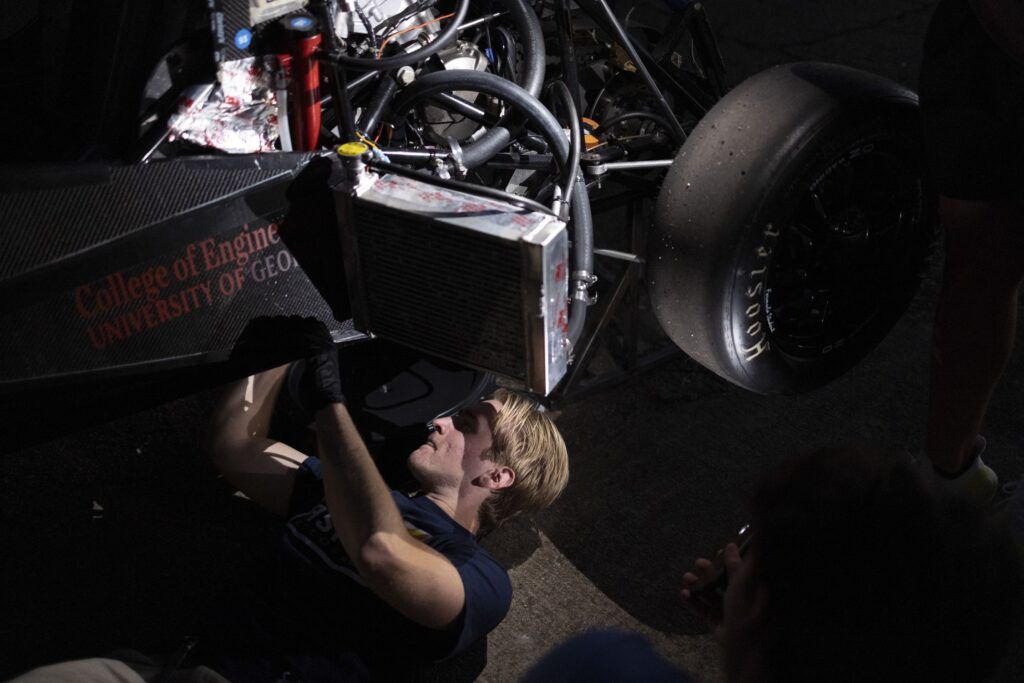
Colquitt says communication was among the most difficult parts of being a team lead. “It was a challenge leading engineers because they aren’t as communicative as a group of journalism students,” he laughs. “But I think one of the best things about UGA engineers is that they have that skill of talking to people. I know a lot of people in this industry who sometimes prefer a Georgia engineer over another school because they have those communication skills.”
A Formula SAE Electric Vehicle team, which was started in 2021-2022, built a successful powertrain. If all goes well, the Formula EV should be ready to ride in 2025.
You don’t have to be an engineering student to be a part of UGA Motorsports, though many of its members are. All are welcome, even students who have never touched an engine before.
“Prior experience and your major don’t really matter,” says Maisi Corbin, this year’s UGA Motorsports club president. “We want to see what your personality is like and how committed you are to being part of a team.”
Corbin says the club has about 70 members this year, and the commitment is significant at five to six hours a week—more when they are getting close to a competition. “This is really like having another class,” she says. In fact, in 2019, the UGA Motorsports club was recognized as an approved experiential learning program, enabling students to fulfill their experiential learning graduation requirement at UGA.
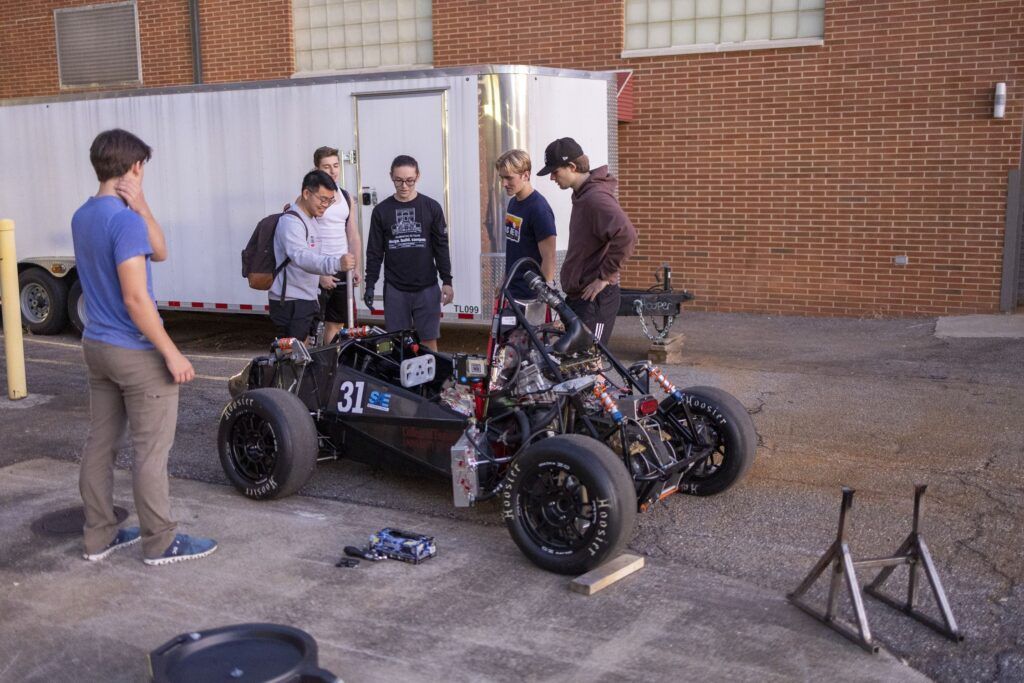
Gaining valuable career experience
That time commitment frequently pays off with career opportunities. Corbin says she has applied for a few internships that require you to be on an SAE team. “Companies really want you to have SAE experience.”
Reyes echoes that sentiment, saying he only got an interview for the internship at Schaeffler Group because of his experience. “Ninety percent of what I did in that internship, I learned from this club,” he says.
Right now, the SAE Formula team is designing the frame and suspension of the 2023 Formula SAE car. “That takes a long time to manufacture, so it has to be done first. If we all finished at the same time, it wouldn’t work. We have to stagger our deadlines,” Reyes explains.
Phase two involves manufacturing all the controls, such as the steering wheel, seat, and shifting. During phase three, students work on the headers, intake, and final drive. “We use motorcycle engines for this,” says Reyes. “But we make our own transmission, which is the biggest part of this phase.”
They hope to begin testing the finished vehicle in late January. They will race in May at Michigan.
Once it’s all finished, Reyes will have a pretty good start on a resume for his dream job: a trackside engineer for a Formula One team.
Written by Heather Skyler
The Racing Life
Hayden Swank uses business skills to push boundaries on the racetrack
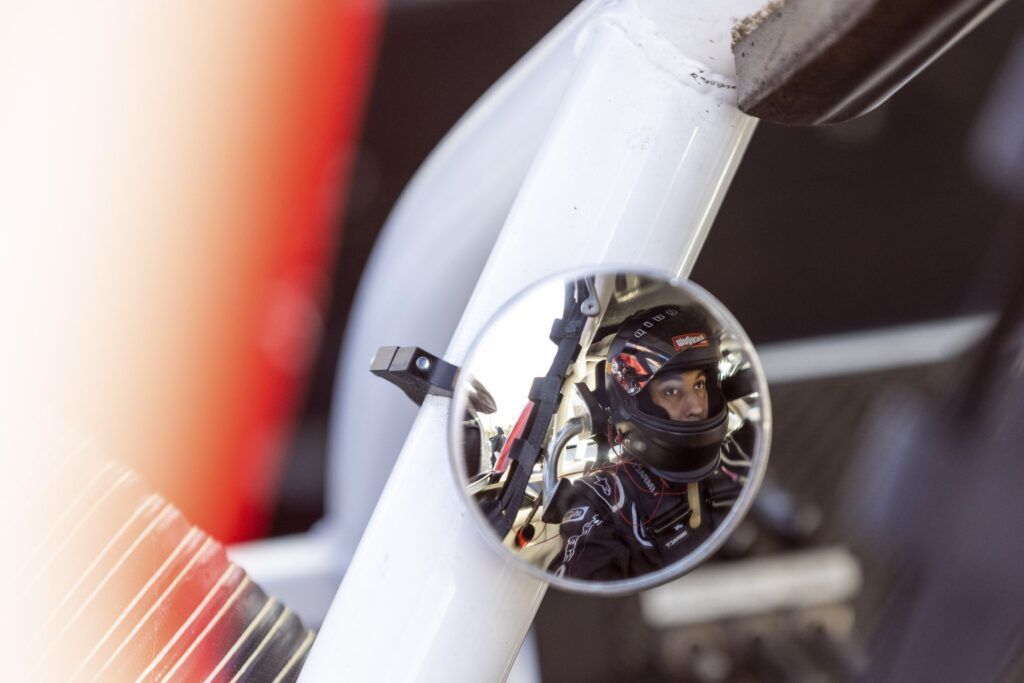
Easley, SC – Friday, 4:23 p.m.
While other students are getting ready to go out or studying for finals, Hayden Swank only has one thing on his mind as he watches his competitors circle the track at Greenville-Pickens Speedway. His best lap time is 0.3 seconds behind the leader. No matter what his team does, they can’t manage to close that last gap.
Between brainstorming sessions in the trailer and running out to make last-minute changes, Swank is intensely focused on his car.
The skill to navigate a racetrack at top speed is one that Swank has been working on since he was a small child. Members of his race crew say that he has been a sound driver since the age of 7, when he first started racing in quarter-midget cars on local tracks.
As the tires wear down and the light fades, the team calls it quits for the day. After all, they spent all day Wednesday following the exact same motions to dial in every point of contact between the car, the track, and Swank.

Saturday, 7:16 p.m.
Swank dons his fireproof suit in the trailer as the previous race runs its last laps. His race should start at 7:30, but an old transformer blows on the back half of the track, killing the lights. This means a later start for Swank and more time for strategy.
Swank has spent his entire life preparing for the wave of the start flag. His opponents now are big names with big money backing them—racers like Josh Berry and Chad McCumbee.
“It’s like, man, I asked him for an auto-graph when I was 12 and came to watch these races,” Swank says. “And we haven’t looked out of place against them. But for me, this isn’t the end goal.”
Swank’s ultimate target is to race in the NASCAR Cup Series, a goal that his team says Swank is always working toward.
While it is tough for Swank to compete against teams with seemingly endless financial backing, this isn’t the only hurdle that Swank has had to overcome in his racing career.
“Nine times out of 10, I’m going to be the only Black driver—not only in my division but in the whole competition,” Swank says. “It’s not uncommon for me to walk into a track and not only be the only mixed driver or the only Black driver, but the only person of color on the premises.”
Swank says that this division puts extra pressure on him as a driver.“I feel like I have an extra responsibility and extra obligation to represent, you know what I mean? I want to put on a good show and prove that I have a place in the sport, and I want to prove to everybody else that anybody can make it.”
Despite the differences and setbacks, Swank remains unfazed as he pulls off a 13th place finish at his third race of the season and on this tour. While not on the podium, this is no small feat considering his starting position amongst 26 other drivers, including several with more years behind the wheel than Swank has been alive.
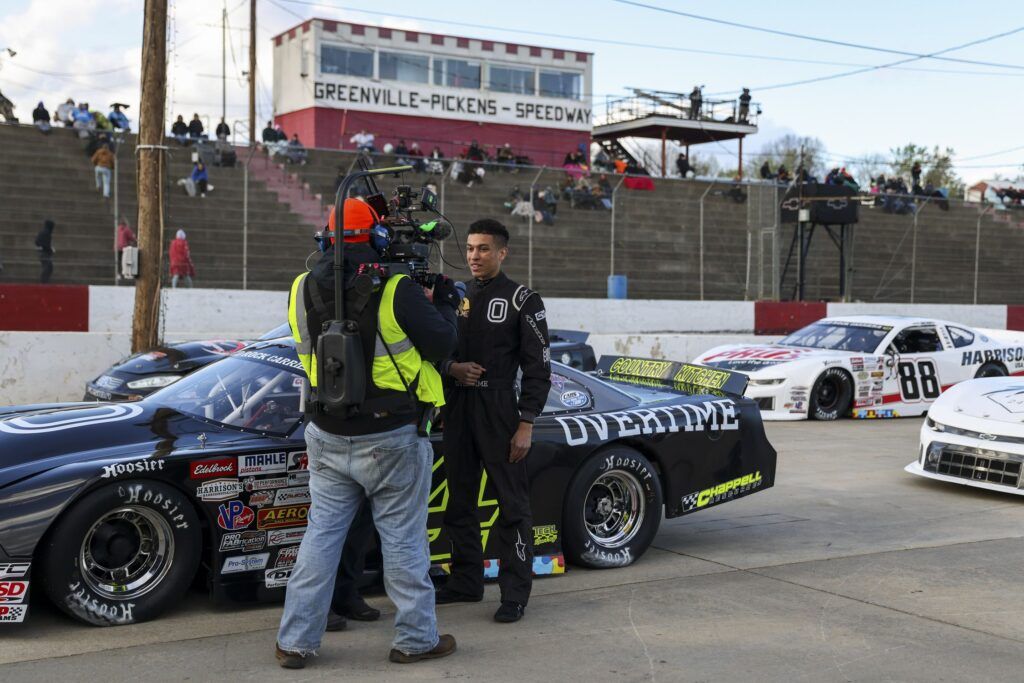
Athens, GA – Monday, 8:47 a.m.
Swank is back in Athens, and his focus shifts to college life.
Double-majoring in advertising through the Grady College of Journalism and Mass Communication and marketing through the Terry College of Business, Swank is in his third year at the University of Georgia.
Going to school while managing a racing career is a challenge, but it’s one he’s up to.
“I think being one of the very few drivers pursuing a degree that’s very relevant to what we do on a day-to-day basis does give me an edge,” Swank says. “I take a lot of what I learn in my advertising and marketing classes and apply that to the racing industry, like the pitches I make when I have to approach a company for the funds to keep the team alive and actually go racing.”
So far, he has used his business savvy to acquire sponsorships for this racing season from the General Motors Bring Us Your Talent Initiative, Chevrolet Performance, AC Delco, Overtime, and Epic Insurance.
But he also likes to keep those two worlds separate.
“I try not to talk about racing too much or let people know that I race because once I do, I guarantee you that’s all I will talk about with them,” Swank says. “I want to have a life outside of racing, and school’s the best way to do that.
“But I do get a certain sense of fulfillment when I can get somebody interested in racing that would have had no exposure to racing otherwise. I’ve gotten my roommates to the point where they can carry on a conversation about racing. And I’m like, ‘OK, I did my job here.’”
Written by Cole Sosebee BSA ’19
Pit Boss
Mallorie Muller takes the fast track from Athens to the Indy 500.
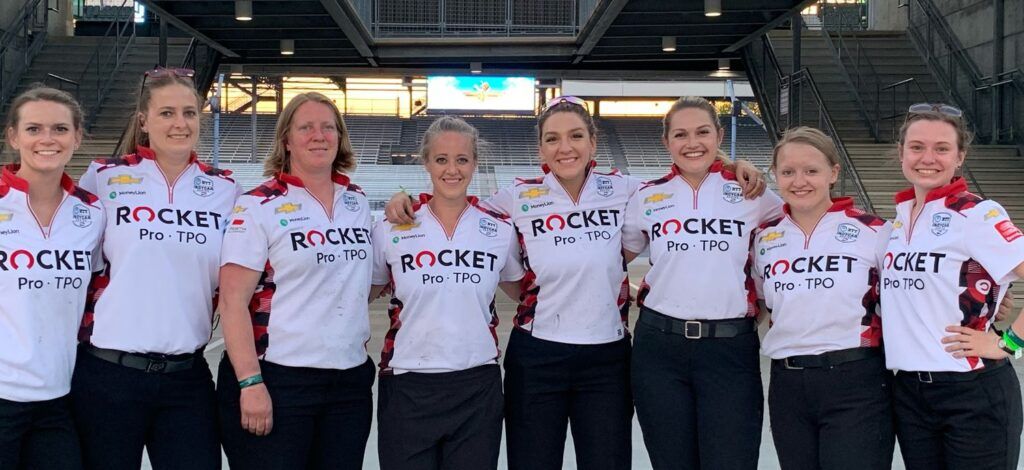
In IndyCar racing, successful pit stops can mean the difference between the winner’s circle and the back of the pack.
Multiple times in every race, pit crews change all four of a car’s tires, fill its tank, and make crucial mechanical adjustments in less than seven seconds before sending it back out onto the track.
But Mallorie Muller BSFCS ’08 and the rest of her team at Paretta Autosport have trained for this. Every move is succinct and choreographed, each person completing her job as quickly as possible.
The adrenaline rush you get jumping that wall is addictive, and Muller is hooked.
Muller is a lifelong athlete, but her sport of choice was not always racing. She grew up in Gainesville, Florida, but when it came time to apply to college, she did not want to be too close to home.
“I had always thought of Georgia as a rival that I respected,” Muller says. “When I started applying, Georgia was at the top of my list, and I was excited to be able to get in.”
Muller joined the Bulldogs’ competitive cheerleading squad, and some of her fondest memories from her time at the university are of cheering with the team.
After graduating, she transitioned to competitive CrossFit but eventually wanted to try something new. When she and her then-boyfriend—now husband—moved to North Carolina, a NASCAR hotspot, she decided to give racing a shot.
Muller found a pit school in Mooresville and trained on a stock car team, where she developed a love for racing. She worked on NASCAR teams for about a year but stepped away to open an acupuncture practice with her husband—a discipline she was trained in as well.
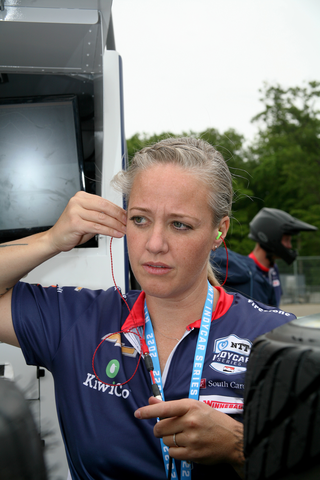

But she never closed the door on auto racing. In 2020, she got a call from a former coach about a new IndyCar team putting together a majority-female crew. Muller made the cut and joined the Paretta Autosport crew. With Swiss driver Simona De Silvestro behind the wheel of their car, the team made history in 2021 as the first crew made up primarily of women to compete in the Indianapolis 500.
During the race, Muller set up and broke down the pit box (where the crew works on the car during the race) and lugged heavy supplies, ensuring all ran smoothly so that the mechanics and data analysts could work efficiently.
Muller is a pivotal part of the team’s success. Her athleticism makes it easier for her to get physical tasks done quickly, a valuable asset in a sport that is often decided in seconds
IndyCar racing is a historically male-dominated sport, but Paretta Autosport is climbing the leaderboard. After their 2021 Indy debut, in 2022 De Silvestro and the team competed in four races, finishing in the top 20 in one of them, and bettering their starting position in all.
The team chemistry at Paretta Autosport reminds Muller of her time at UGA.
“Of course, every team wants to win, but there is this kind of camaraderie, family dynamic, where everyone is pretty supportive,” she says. “I feel like that was the case in cheerleading too.”
As a mother, balancing family and racing is still a challenge. But she wants to show other moms that it is possible. And she wants to inspire her daughter and other young women to dream big.
“I feel really proud and empowered being a mom in this sport,” Muller says. “Who can say as a mom that they get to jump in front of a 60 mile-an-hour car on the weekends?”
Written by Ireland Hayes
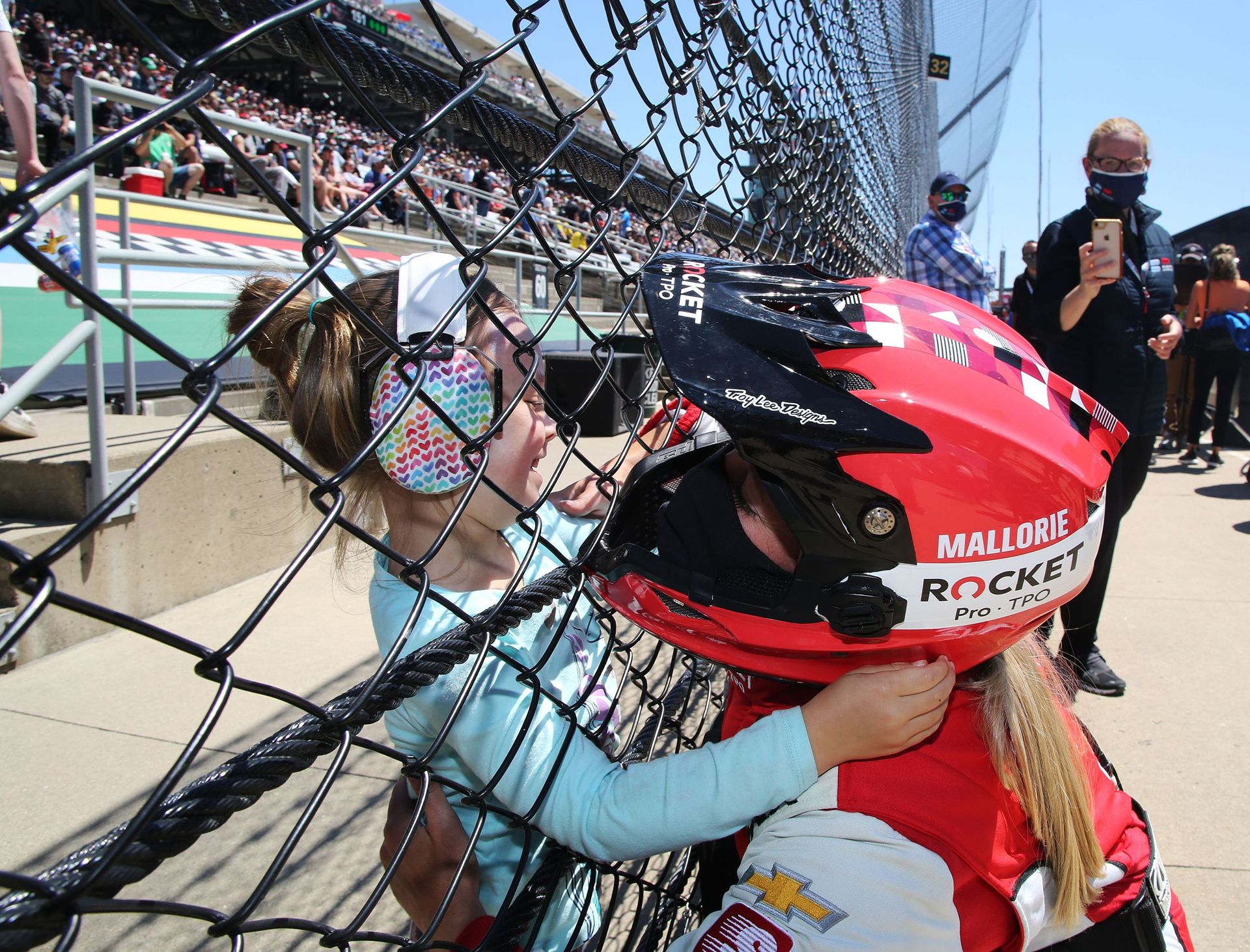
Written by: Aaron Hale
Photography by: Peter Frey, Chamberlain Smith
Design by: Andrea Piazza
Videography by: Nick Bragg
